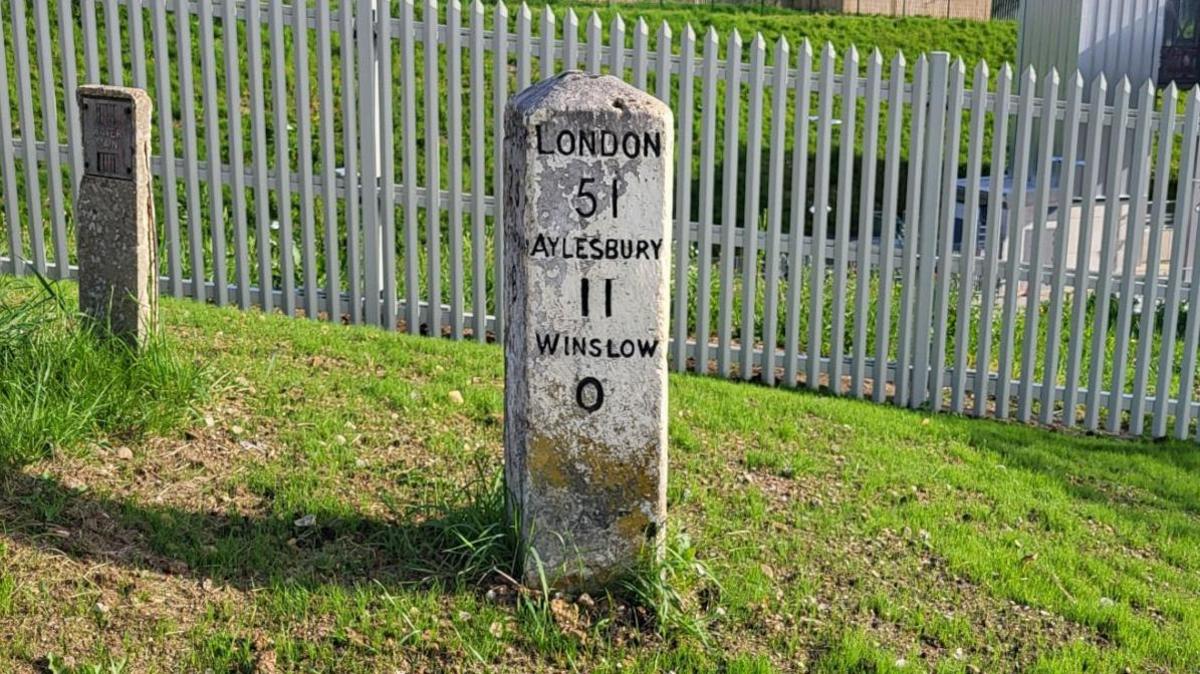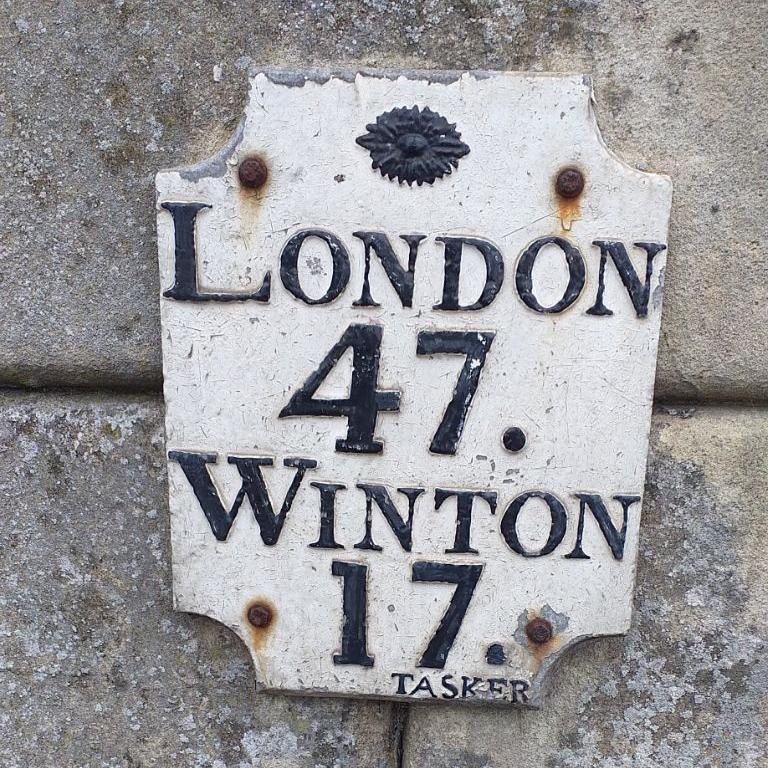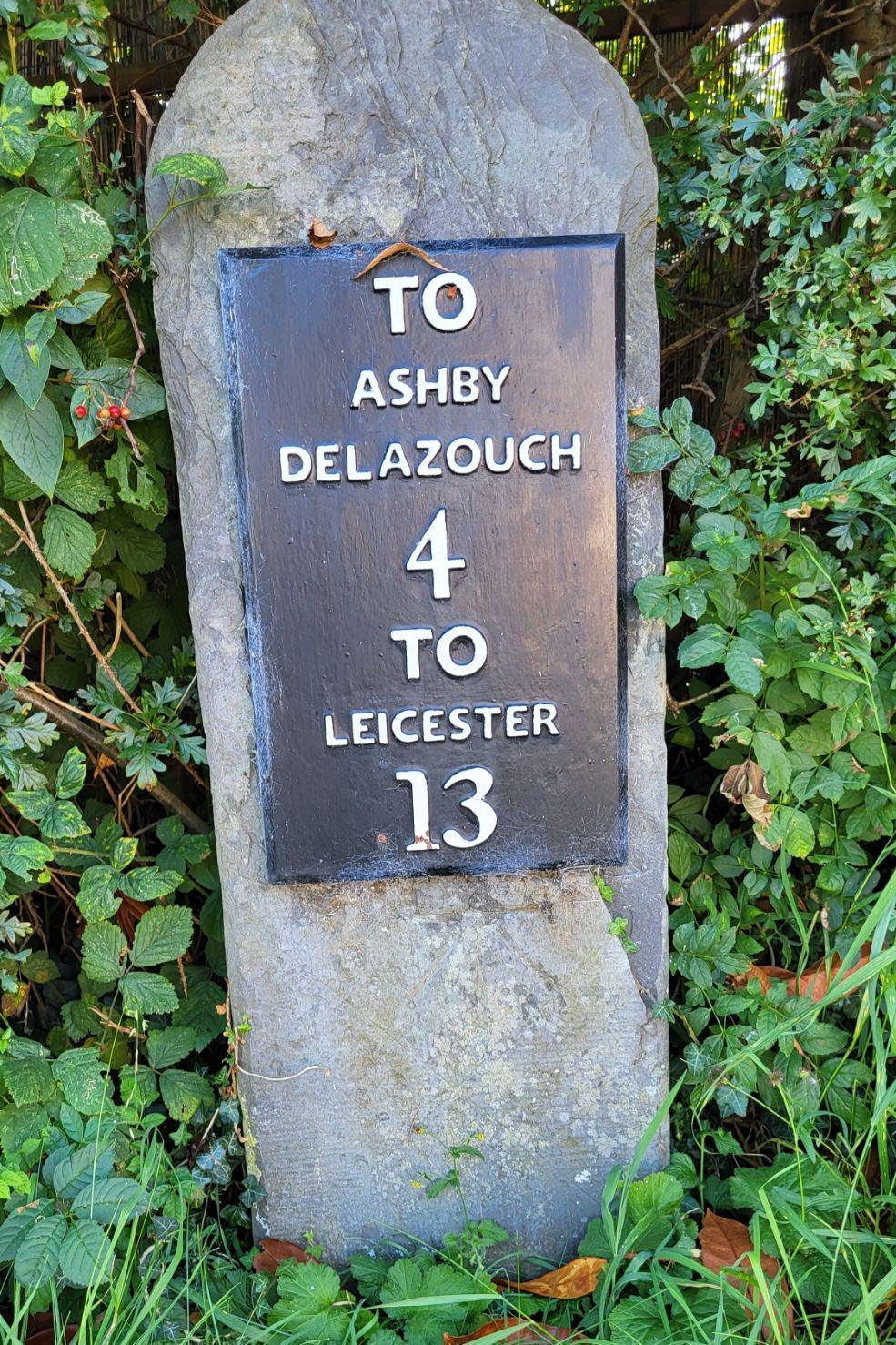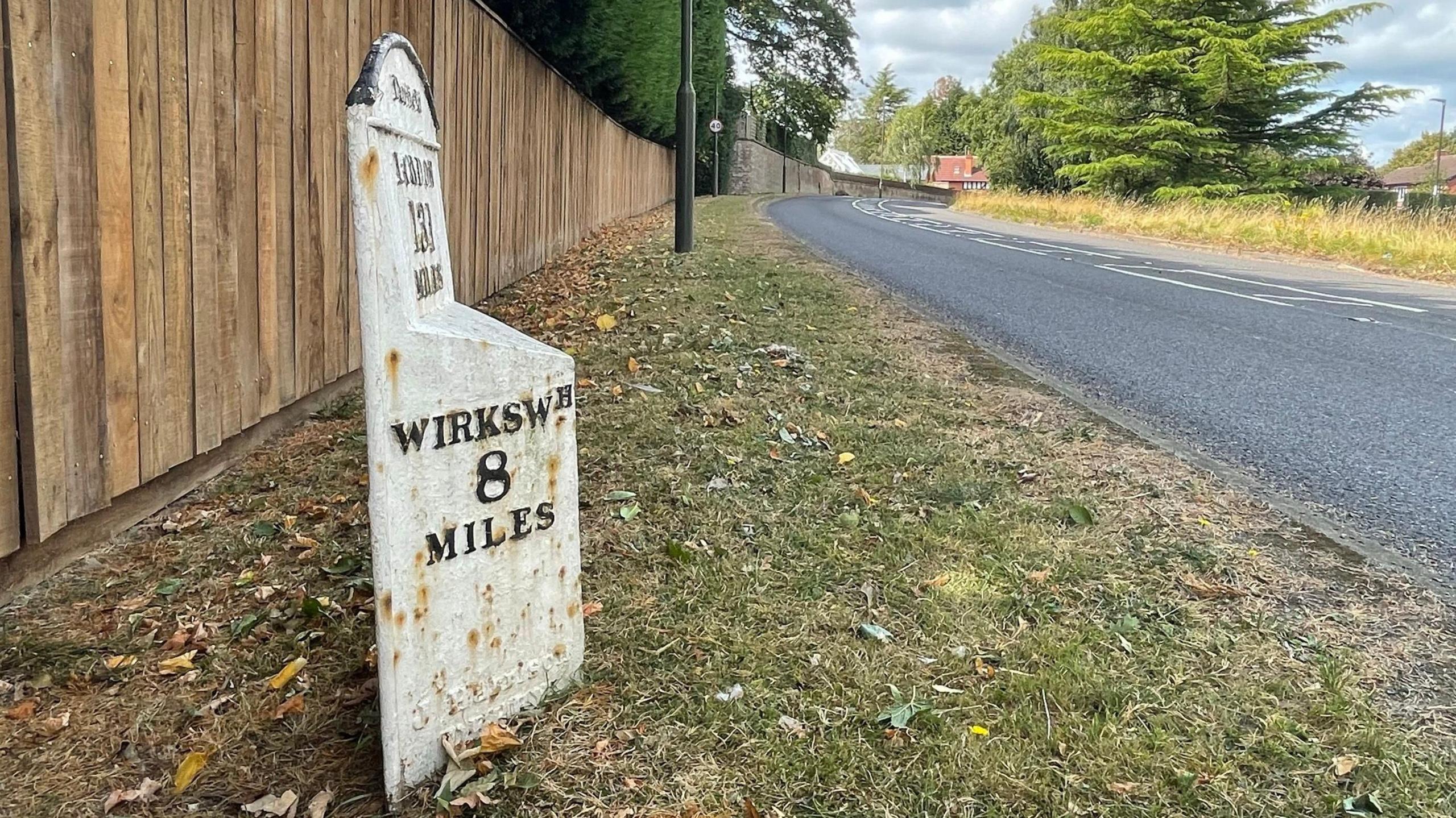What are milestones and why do we still have them?

The markers were put in place hundreds of years ago
- Published
A stolen Derbyshire mile marker made headlines in recent days after it was spotted a fair distance from home at a Welsh auction house.
But while one was saved from being lost forever, the ancient nationwide network of milestones remains at risk of falling by the wayside.
Three centuries ago, travellers and traders relied on milestones as they navigated the UK's turnpike roads.
Their use fell out of favour, but some 2,300 or so physical remnants remain.
A group of volunteers, The Milestone Society, says these need to be protected as a part of heritage that is easy to miss - and surprisingly easy to lose.
What are milestones?
In the 1700s, frustrated by the abysmal state of the country's roads, Parliament took action.
Rob Westlake, chairman of The Milestone Society, said: "Most of the byways and highways, routes between places of commerce, were absolutely in a disastrous state - in winter some were impassable, in summer they were dry and dusty and unpleasant, but it was the only method for passengers and cargoes to travel."

Mile markers, like this one in Alton in Hampshire, come in all shapes and sizes
Turnpike trusts were introduced, each one by a separate Act of Parliament, across the country to take on the upkeep of key roads.
In most cases, to fund the turnpikes - the motorways of their day - tolls were needed, with permanent waymarkers installed to prevent disputes over distances travelled and how much coaches needed to be paid.
From carved lamps of stone to later ornate cast-iron versions, a web of these ended up on these key roads across the country - making them very much the motorways of their day.
What's the point of milestones in the modern day?
The disparate turnpike trusts had a good run, at one point operating a fifth of the country's roads.
But with the rise of the railways in the 19th Century, they struggled and in the 1870s, the first county councils were established.
These became the highways authorities responsible for maintaining the roads network, and the turnpike trusts were abandoned - along with their infrastructure of tollhouses, sidebars, gates and their mile markers.

From their roots as lumps of stone, the markers became more ornate over time
The markers are of no use today, but Mr Westlake said: "The bottom line is they are part of our heritage, and it would be wrong to lose them just because they are of no use.
"We call ourselves the friends of the milestones, they should be loved and respected, and it would be great if other people would treat them with respect."
Are milestones in danger?
Milestones sit along roads in all sorts of locations, from rural roads to busy city streets.
If they become lost in vegetation, they can be prone to damage from the cutting of verges - one in South Yorkshire befell this fate just this week, said the society.
If they are damaged by vehicles, displaced by roads schemes, or stolen like the Derbyshire iron casting, if nobody realises they have vanished, they risk being lost for good.
The society works closely with auction houses to try to prevent stolen milestones being sold, and with highways authorities to ensure milestones are returned to as close to their original placement as possible if they happen to be standing in the way of progress.
Mr Westlake said: "Luckily, we can reposition a milestone to within a metre or two."
How can they be protected?
Many milestones - such as the Derbyshire cast iron milepost - which was eventually found being used as a garden ornament - have the protection of listing by Historic England.
Milestones have been listed since the 1980s, when the government passed the 1983 National Heritage Act and resurveyed the nation's historic structures, including milestones and tombstones for a first time.
This epic undertaking was likened to a "modern Domesday" by Historic England.
Their listing and architectural research director Charles O’Brien said milestones "offer a unique glimpse into how people of the past navigated around our landscape".
Listing gives them legal protection, but a good many milestones do not have this.
There are currently 2,966 milestones logged on the National Heritage List for England, but only 1,714 are listed or scheduled mileposts, a figure which includes finger posts, canal mileposts and signposts.
The Milestone Society admits for the number of milestones that exist, it would be difficult to formally list them all.
Mr Westlake said: "It would be impossible to go through all the rigmarole. While some are very elaborate, majestic almost, others are almost nothing more now than lumps of stone."
It remains a criminal matter to remove anything from the highway, however, so police can investigate, should one be suspected stolen.

Making sure people realise they are there is key to conservation, said The Milestone Society
The society says the main thing that can be done to protect milestones is simply to make sure people know they are there in the first place.
Where safely possible, volunteers try to keep the milestones from being buried in the undergrowth.
The society is calling on everyone who is following in the footsteps of a turnpike traveller from centuries ago to help ensure milestones are protected for future generations.
Mr Westlake said: "The country is wide, from the back roads to the A-roads, from the milestones on Salisbury Plain to the stone stoops of Derbyshire, we need people to be our eyes and ears."
Follow BBC Derby on Facebook, external, on X, external, or on Instagram, external. Send your story ideas to eastmidsnews@bbc.co.uk, external or via WhatsApp, external on 0808 100 2210.
Related topics
- Published25 August 2024
